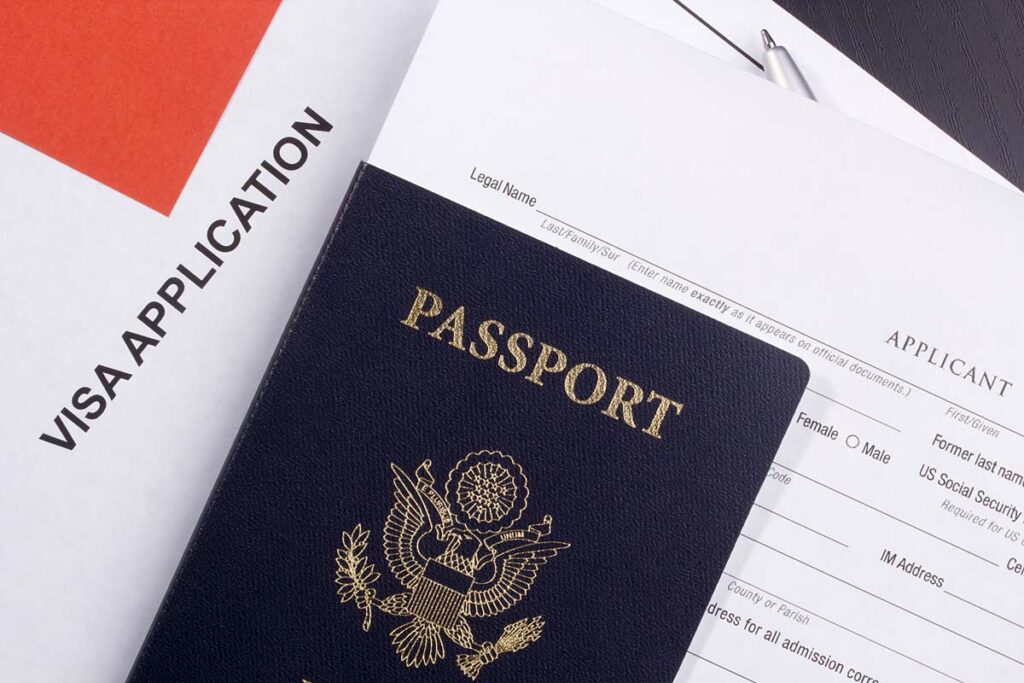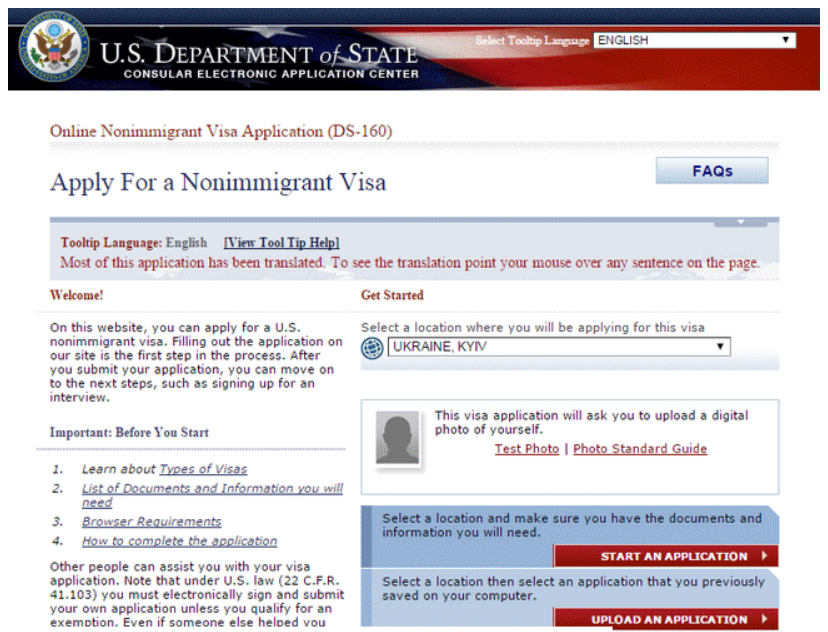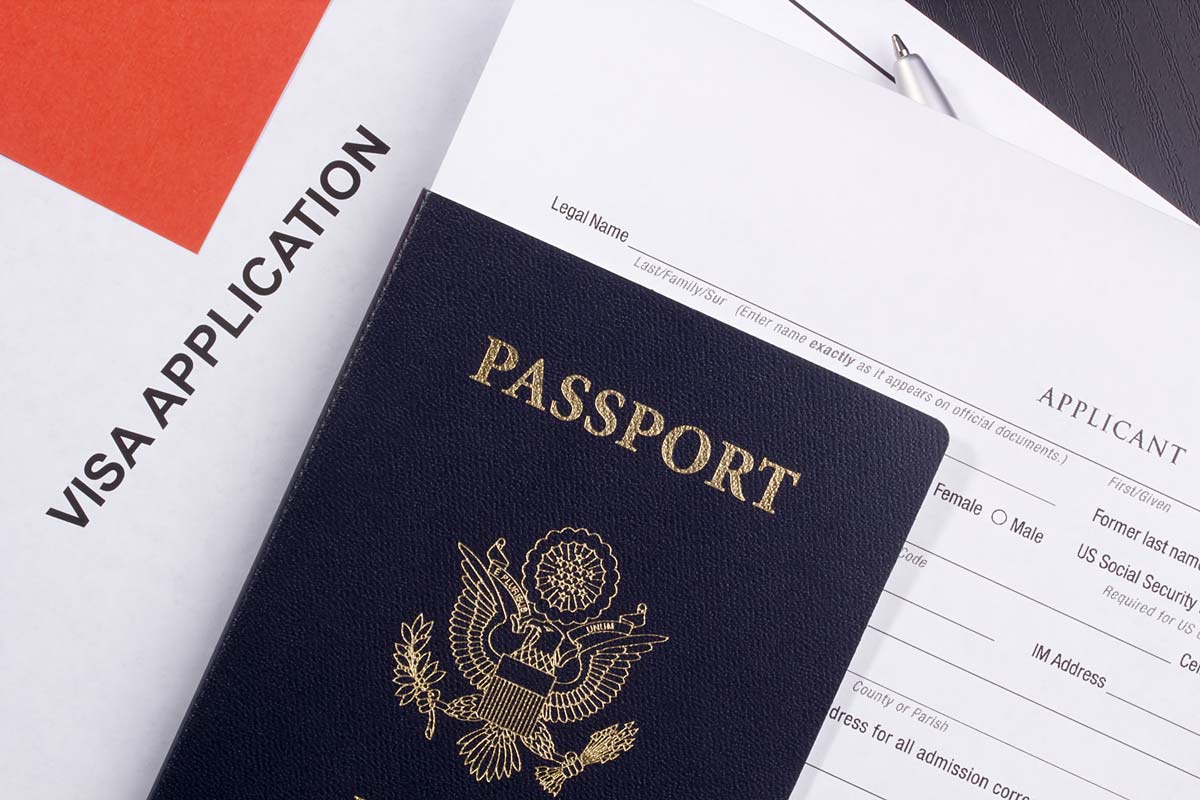How to immigrate to the United States: 8 essential forms that everyone should know

Immigration to the United States of America can seem like a complex and confusing process. The multitude of documents, rules, and procedures create the impression that the system is impenetrable. However, if approached with a plan and structure, the process becomes more understandable and manageable. In this article, we will review eight key forms that play an important role in U.S. immigration, whether for temporary stay or obtaining permanent status.
1. Form DS-160: First Introduction to the U.S. Immigration System
Form DS-160 is an online application for a nonimmigrant visa, and it becomes the first step for many potential immigrants. By filling out this form, you provide information about yourself, including passport details, marital status, work experience, and travel history. This data is sent to the U.S. immigration service, and a visa issuance decision is made based on it. It is important that the information provided in DS-160 is accurate, as any errors or false information can negatively affect your immigration history.

2. Form I-94: Importance of Updating and Checking Status
Form I-94 is a document that records your date of arrival in the U.S., your immigration status, and the duration of your authorized stay. Each time you enter the country, it is important to update and print the latest version of this form. Remember that the visa validity period and the status duration in Form I-94 are different things. Refer to the dates indicated in Form I-94 to avoid issues with violating immigration status.
Having trouble understanding?
Contact us, we can help!
3. Form I-485: Adjustment of Status from Nonimmigrant to Immigrant
Form I-485 is used to adjust your status from nonimmigrant to immigrant if you are legally present in the U.S. Completing this form allows the immigration service to verify your eligibility for a green card. When submitting I-485, a background check, medical examination, and other important aspects are conducted. This is one of the most comprehensive forms, and it should be filled out carefully.
When should you file Form I-485?
Form I-485 is filed after you are already legally in the U.S. on a visa that allows for status adjustment. For example, you can file this form if you are:
- Spouse of a U.S. citizen.
- Parent or child of a U.S. citizen.
- Holder of a work visa with an approved Form I-140 (Immigrant Petition for Alien Worker).
- Individuals who have been granted asylum or refugee status.
- Recipients of a family reunification visa after approval of Form I-130.
What information is required?
Form I-485 consists of several sections, each requiring detailed information:
1
Personal Information: Here you provide your first and last name, date and place of birth, information about parents, marital status, and other personal details.
2
Immigration History: You need to specify how and when you arrived in the U.S., what status you had upon entry, and how you changed it. It is especially important to provide exact dates and avoid errors in this section.
3
Criminal History: USCIS checks for any criminal records and involvement in illegal activities. If you have ever been arrested, you will need to provide complete information about it, including dates and the outcome of the case. Even if the case was closed or dismissed, it still needs to be mentioned.
4
Medical Examination: You must undergo a medical examination by a certified physician who will complete Form I-693. This document confirms that you do not have diseases that pose a threat to public health and that all necessary vaccinations have been administered.
5
Financial Support: It is important to prove that you will not become a “public charge” to the government, meaning you will not require assistance from government programs. Usually, an affidavit of support (Form I-864) is provided, signed by your sponsor—a U.S. citizen or green card holder—who commits to providing your financial support.
4. Form I-140: Immigrant Petition for Alien Worker
Form I-140 is an immigrant petition filed by foreign workers seeking to obtain a green card based on their professional skills or achievements.
Approval of the I-140 petition does not grant you immediate status in the U.S., but it is a necessary step toward obtaining a green card.
5. Form I-130: Petition for Family Reunification
Form I-130 is used to file a petition for family reunification. If you have a relative who is a U.S. citizen or green card holder and wishes to reunite with you, this form will be your first step. However, approval of I-130 does not grant you the right to remain in the U.S., and additional steps may be required to obtain status.
Main Categories of Relatives Who Can File Form I-130
- U.S. Citizens can file a petition for:
- Spouses.
- Children (under 21 years old).
- Parents.
- Siblings (if the U.S. citizen is 21 years old or older).
- Green Card Holders (permanent residents of the U.S.) can file a petition for:
- Spouses.
- Unmarried children (under 21 years old and older).

6. Form I-589: Application for Asylum or Withholding of Removal
Form I-589 is used to apply for asylum or withholding of removal. If you face persecution based on race, religion, nationality, membership in a particular group, or political opinion, you can file Form I-589 with USCIS while in the U.S. It is important to note that the asylum application must be filed within one year of your last entry into the country.
7. Form I-765: Application for Employment Authorization
Form I-765 allows you to legally work in the U.S. Depending on your immigration status, you may need to complete this form to obtain work authorization. In some cases, it can be filed online, making it easier to track the status of your application.
Important Aspects When Completing Form I-765
- Applicant Category: One of the key points when completing the form is correctly indicating the category to which you belong. Each category has its own code, and an error in this can lead to delays or denial.
- Filing Deadlines: Some categories of applicants can only file Form I-765 within certain timeframes. For example, F-1 visa students can apply for work authorization only 90 days before the intended start date of employment.
- Renewal of Work Authorization: It is important to apply for EAD renewal before the current authorization expires to maintain uninterrupted work eligibility.
- Consistency with Other Immigration Documents: The information provided in Form I-765 must exactly match the data provided in other immigration documents, such as Form I-485 or I-130. Discrepancies can cause delays.
- Recommendation to Use E-Verify: If the employer uses the E-Verify system, you may need to provide EAD data to confirm work eligibility.
8. Form I-131: Application for Travel Document or Advance Parole
Form I-131 is used to obtain a travel document or Advance Parole, which allows you to temporarily leave the U.S. and return without losing status. This is important if you have filed Form I-485 and have not yet received a green card. Without Advance Parole, leaving the country may be considered an abandonment of your pending status adjustment application.
The immigration process in the U.S. can seem complex, but knowing and properly using key forms significantly eases it. It is important to carefully complete all documents, avoiding errors and providing false information to avoid potential negative consequences. Be attentive and mindful of deadlines, and your chances of successful immigration will significantly increase.
Moving to the U.S. is a complex process that requires thorough preparation and knowledge of key immigration forms. For successful visa acquisition and subsequent entry into the U.S., it is important to understand which documents need to be completed. Among them are forms such as I-485 for obtaining permanent residency, I-130 for filing a family reunification application, and DS-160 for applying for a nonimmigrant visa through a U.S. consulate. This depends on the purpose of your entry into the U.S. and specific circumstances—whether it is a short-term stay in the U.S. for up to 6 months or a longer relocation. U.S. Citizenship and Immigration Services (USCIS) in cooperation with the U.S. Department of State manage the processes of obtaining visas and entering the country. If you are outside the U.S., you will need to contact a U.S. consulate to apply for a visa and obtain the right to enter the United States. It should also be noted that rules and requirements may change, so it is important to stay informed of current information, especially if your stay in the U.S. will last more than 2 years.
Having trouble understanding?
Contact us, we can help!
